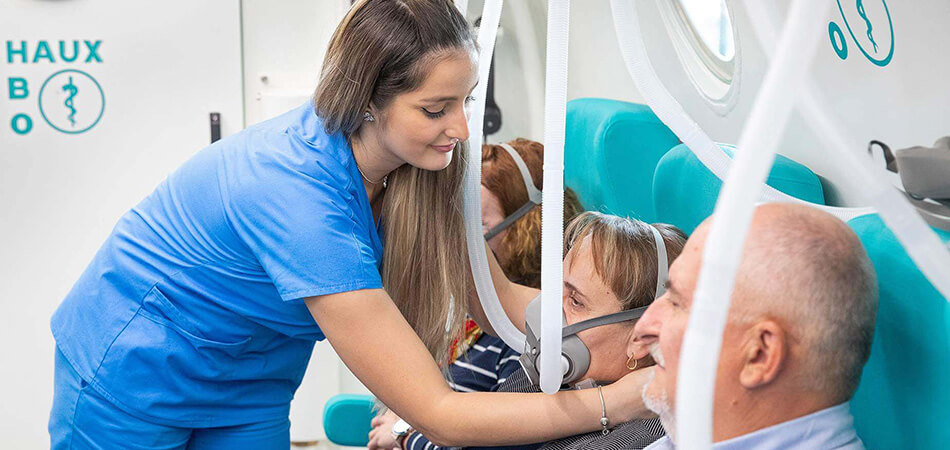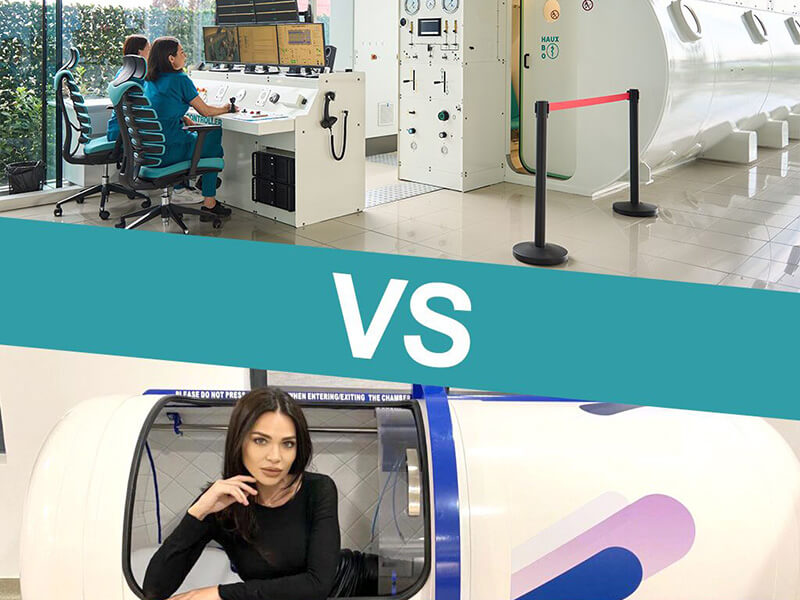
Article reviewed by: Dr. Sturz Ciprian, Dr. Tîlvescu Cătălin and Dr. Alina Vasile
The Benefits of Hyperbaric Therapy: How Does It Affect You?
This article provides an analysis of how hyperbaric therapy can support health, focusing on its advantages based on scientific evidence, without exaggerating promises or expectations. It is important to know that although hyperbaric therapy offers numerous benefits, it must be used as an integral part of a coordinated medical treatment under the strict guidance of health professionals.
What are the benefits of hyperbaric therapy?
- Improving wound healing: By increasing tissue oxygen levels, hyperbaric therapy speeds up the wound healing process, especially for chronic, incurable wounds.
- Improving blood circulation: Favors tissue oxygenation and can help in the treatment of vascular conditions.
- Relief of chronic pain: May reduce symptoms in chronic pain conditions. Hyperbaric therapy specifically helps chronic pain through the mechanism of increasing blood and tissue oxygen levels. Chronic pain is often associated with inflammation and tissue oxygenation deficiency, and hyperbaric therapy addresses these issues directly.
- Improving the immune system: Better tissue oxygenation can improve immune system function because immune cells, such as white blood cells, depend on oxygen to effectively fight infection.
- Stimulating the formation of new blood vessels: By increasing the formation of new blood vessels (angiogenesis), hyperbaric therapy can improve circulation in affected areas, thus facilitating a faster and more effective immune response. In areas where blood circulation is compromised, tissues can suffer from hypoxia. Increasing the number of blood vessels can combat this deficit, ensuring an adequate supply of oxygen.
- Antimicrobial effect: Oxygen at high pressures can have a direct antimicrobial effect, destroying certain bacteria and inhibiting their growth. This can reduce the risk of infections, especially in cases of open wounds or chronic infections.
- Bone Marrow Stem Cell Mobilization: Studies recent studies showed an eightfold increase in the number of stem cells measured in the blood after a series of 20 HBOT treatments. Stem cells have the ability to differentiate into almost any type of tissue, being a valuable resource for regeneration and repair.
- Improving cognitive performance, including memory: Increasing brain oxygenation helps improve the functioning and health of neural cells. There is a body of studies that demonstrate the beneficial effects of periodic hyperbaric therapy in preserving and improving cognitive functions.
- Stimulates the body to produce more antioxidants: Although hyperbaric therapy may initially increase free radical levels, it stimulates the body's antioxidant response, which can have a net beneficial effect on oxidative stress. Free radicals are unstable molecules that can damage cells, being associated with inflammation and aging.
- Improved oxygenation of heart tissue: Hyperbaric therapy significantly increases the amount of oxygen in the blood. This improved oxygenation can help nourish heart tissues, especially in areas with compromised blood flow due to heart disease.
- Stimulation of collagen and skin cell growth: Collagen is an essential protein for the structure and strength of the skin. During hyperbaric therapy, the increased level of oxygen in the blood can improve the body's ability to produce new collagen. Excess oxygen can also accelerate the formation of new skin cells, which is crucial for the repair and regeneration of damaged tissue.
- Treatment of certain serious infections: Effective against infections resistant to conventional treatments, being an excellent adjunctive treatment.
- Fast recovery in sports: Hyperbaric therapy is used by professional athletes to speed up recovery from sports injuries. Oxygen in large quantities helps speed up the healing processes of damaged tissues, be it muscle, tendon, ligament or bone injuries. It improves the formation of new blood vessels, a process essential for the efficient transport of nutrients to the injured area. It also reduces inflammation and edema associated with sports injuries, thus contributing to faster recovery and shorter convalescence time.
- Improving sports performance: Hyperbaric therapy is an established method for increasing sports performance. By improving mitochondrial respiration and increasing mitochondrial population, increases in maximal volume of oxygen consumed (VO2 max), muscle strength and anaerobic threshold (VO2AT) are obtained. Well-known athletes such as Michael Phelps, Cristiano Ronaldo, LeBron James and many other athletes have been using hyperbaric treatment for years to recover and increase sports performance.
- Support in recovery from cancer treatment: May help alleviate the side effects of cancer treatments.
These benefits are added to the specific treatment of the condition you will treat, being an integral part of a coordinated medical treatment.
Thanks to HBOT's working principle, the possible applications of this procedure are numerous and it can be used as an urgent treatment for acute pathologies, but also as an adjuvant treatment for certain chronic diseases. With 14 FDA-approved conditions, more than 30 conditions approved by the European Commission on Hyperbaric Medicine (ECHM), and hundreds of completed and ongoing clinical trials, the scientific community continues to explore potential benefits for dozens of major conditions.
The European Hyperbaric Medicine Committee classifies the conditions for which it recommends hyperbaric medicine in several categories:
| Grade 1: Strong recommendation | Grade 2: Recommended | Grade 3: Optional | Other indications: |
|---|---|---|---|
|
|
|
|
| Grade 1: Strict recommendation |
|---|
|
| Grade 2: Recommended |
|---|
|
| Grade 3: Optional |
|---|
|
| Other indications: |
|---|
|
For a complete overview of the directions, visit the following sections:
There are hundreds of studies completed in the field of hyperbaric medicine, and the doctors at Hyperbarium have categorized these studies for easy access and consultation. If you are interested in exploring them in detail, visit the scientific studies section of the Hyperbarium website.




